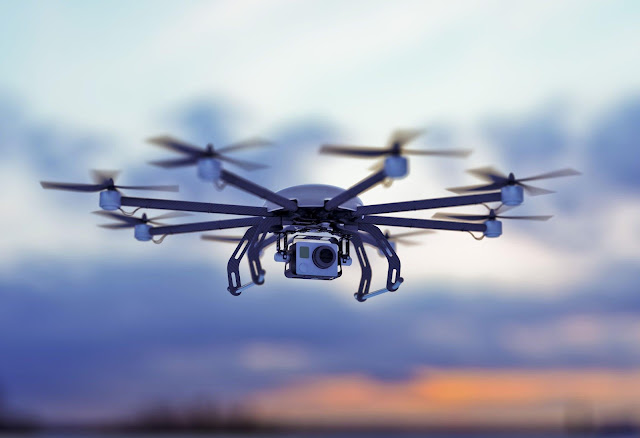In recent years, the rapid advancements in drone technology have transformed various industries, from photography and videography to surveying and mapping. At the heart of these groundbreaking innovations lies the integration of professional drone cameras, which have revolutionized the capabilities of unmanned aerial vehicles (UAVs). Let us explore the immense potential of drone cameras, their significance in drone imaging, and the benefits they offer across diverse applications.
Understanding the Role of Drone Cameras
A drone camera is a specialized camera designed for mounting on UAVs, enabling high-quality aerial photography and videography. These cameras are engineered to deliver exceptional image and video quality, capturing stunning visuals from elevated perspectives that were once inaccessible. With their advanced features and capabilities, drone cameras have become essential tools for professionals seeking to capture breathtaking aerial imagery and data.
Enhancing Drone Imaging
Drone imaging refers to the process of capturing images and videos using UAVs equipped with high-quality cameras. Integrating professional-grade cameras into drones has elevated the possibilities of aerial imaging, enabling professionals to gather valuable data, create detailed maps, and capture captivating visual content. Let's delve deeper into the ways drone cameras enhance the field of drone imaging:
Unparalleled Image Quality: Professional drone cameras are designed to deliver exceptional image quality, capturing high-resolution photographs and videos with superior clarity, color accuracy, and dynamic range. These cameras often feature large sensors, advanced optics, and image stabilization technology to ensure sharp and precise imagery, even in challenging flying conditions.
Versatility and Flexibility: Drone cameras offer a wide range of shooting modes, including manual control over exposure settings, shutter speed, aperture, and ISO. This versatility allows photographers and videographers to exercise creative control and capture images and videos tailored to their needs and artistic vision.
Aerial Mapping and Surveying: Drone cameras are crucial in aerial mapping and surveying applications. By capturing high-resolution images from different angles and altitudes, these cameras enable drone camera professionals to create accurate 2D maps, 3D models, and point clouds of landscapes, infrastructure, and geographical features. This data is invaluable for urban planning, construction site monitoring, environmental assessments, and land surveying.
Industrial Inspections: Drone imaging equipped with specialized cameras is widely utilized in industrial inspections, such as infrastructure inspections, power line inspections, and pipeline inspections. Thermal imaging capabilities enable inspectors to detect heat signatures, leaks, and structural defects that are not visible to the human eye. The ability to conduct inspections remotely utilizing drones outfitted with professional cameras improves safety, lowers costs, and speeds up data collecting.
Cinematic and Creative Productions: The integration of professional drone cameras has revolutionized the field of aerial cinematography and creative productions. These cameras, with their potential to record beautiful aerial vistas and dramatic sequences, have expanded the possibilities for filmmakers, content providers, and visual artists. From breathtaking aerial landscapes to dynamic action sequences, drone cameras provide a unique perspective that adds depth and visual impact to storytelling.
The integration of professional drone cameras has propelled drone imaging to new heights, offering unparalleled image quality, versatility, and creative possibilities. These specialized cameras have transformed how professionals capture aerial imagery, enabling precise mapping, efficient surveying, industrial inspections, and cinematic productions. As technology progresses, we may expect additional drone camera breakthroughs, unleashing even more substantial possibilities for aerial photography across a wide range of businesses and applications. Whether it's capturing breathtaking landscapes, conducting industrial inspections, or pushing the boundaries of creativity, professional drone cameras have become indispensable tools in the world of aerial imaging.
Frequently Asked Questions:
Can I use any camera with a drone?
Not all cameras are suitable for use with drones. Professional drone cameras are designed to withstand aerial photography's challenges, offering features such as lightweight construction, image stabilization, and remote control compatibility.
What are the benefits of employing a professional drone as opposed to a consumer-grade camera?
Professional drone cameras are engineered for high-quality imaging, offering superior image quality, advanced features, and the ability to capture imagery in challenging flying conditions. They also provide more control over exposure settings and offer specialized features like thermal imaging for industrial inspections.
How does a drone camera contribute to aerial mapping and surveying?
Drone cameras capture high-resolution images from different angles and altitudes, enabling professionals to create accurate maps, 3D models, and point clouds of landscapes and infrastructure. This data is crucial for urban planning, construction site monitoring, environmental assessments, and land surveying.
Are professional drone cameras suitable for industrial inspections?
Yes, professional drone cameras are widely used in industrial inspections. They often have specialized features such as thermal imaging capabilities, allowing inspectors to identify heat signatures, leaks, and structural anomalies. The ability to conduct inspections remotely using drones equipped with professional cameras enhances safety, reduces costs, and enables efficient data collection.
How do drone cameras contribute to aerial cinematography?
Drone cameras have revolutionized aerial cinematography and creative productions. They capture stunning aerial shots and cinematic sequences, providing a unique perspective that adds depth and visual impact to storytelling. Filmmakers, content creators, and visual artists can leverage the capabilities of drone cameras to create captivating and immersive visual content.

Comments
Post a Comment